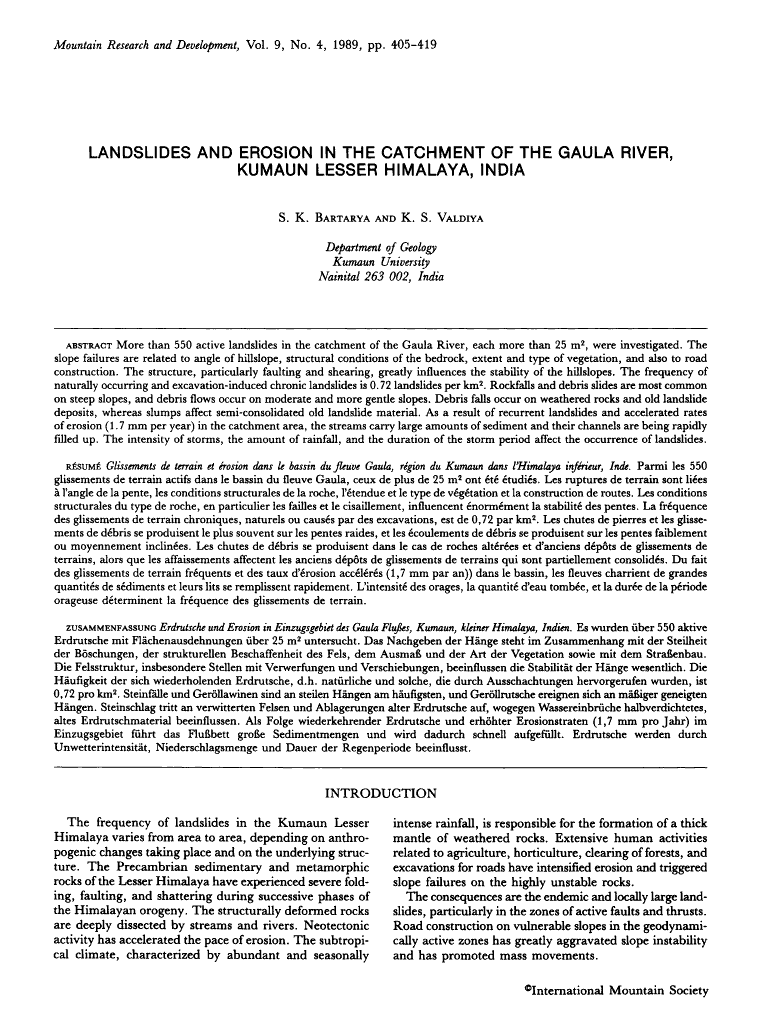
More than 550 active landslides in the catchment of the Gaula River, each more than 25 m2, were investigated. The slope failures are related to angle of hillslope, structural conditions of the bedrock, extent and type of vegetation, and also to road construction. The structure, particularly faulting and shearing, greatly influences the stability of the hillslopes. The frequency of naturally occurring and excavation-induced chronic landslides is 0.72 landslides per km20.72 landslides per km2. Rockfalls and debris slides are most common on steep slopes, and debris flows occur on moderate and more gentle slopes. Debris falls occur on weathered rocks and old landslide deposits, whereas slumps affect semi-consolidated old landslide material. As a result of recurrent landslides and accelerated rates of erosion (1.7 mm per year) in the catchment area, the streams carry large amounts of sediment and their channels are being rapidly filled up. The intensity of storms, the amount of rainfall, and the duration of the storm period affect the occurrence of landslides.